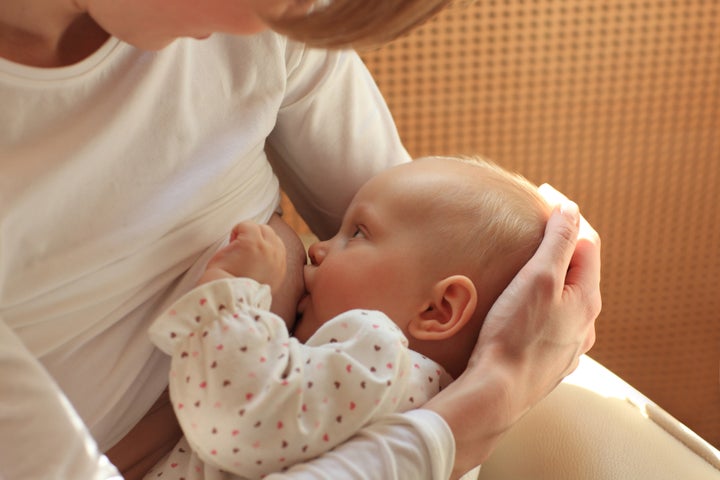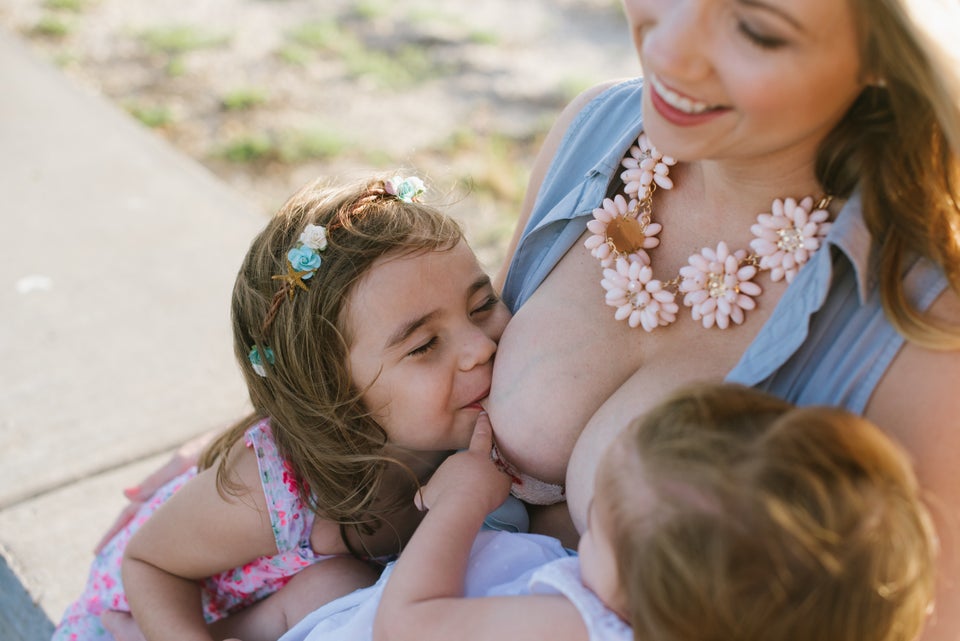Breastfeeding advice is usually geared towards giving new mothers tips on how to feed their baby.
But there’s another issue that’s not as widely spoken about: how to stop breastfeeding.
Just as it can be hard for women to get their babies to latch on, women wanting to move onto bottles can find themselves feeling uncomfortable and exhausted.
Mothers need to allow their bodies to gradually get used to producing less milk.
“There may be many reasons mums want to stop breastfeeding,” Clare Byam-Cook, a trained midwife specialising in mothers’ breastfeeding issues.
“They may stop because they’re hating every second or because they have an absolute goal like going back to work and they physically can’t carry on breastfeeding.”

Advice on when to stop breastfeeding is subjective.
“It’s up to you and your baby to decide when you want to finish breastfeeding, the NHS states.
“It’s recommended that you breastfeed your baby exclusively (give them breast milk only) for the first six months of their life.”
The World Health Organisation agrees, recommending: “Exclusive breastfeeding is recommended up to six months of age, with continued breastfeeding along with appropriate complementary foods up to two years of age or beyond.”
We chatted to Byam-Cook about how women can stop breastfeeding.
Prepare in advance if you have a goal
If the reason you’re stopping breastfeeding is because you need to go back to work and won’t be able to breastfeed, Byam-Cook said planning is essential.
The longer you give yourself to make the transition, the easier it will be when the “deadline”, as you may call it, comes.
“You need a minimum of a month to ensure the baby is happy to take a bottle,” she said.
“The older the baby, the worse the problem. Up until four months, it’s easy to get a baby on a bottle but after, it’s increasingly hard.”
Gradually reduce milk taken out of the breast
Babies breastfeed for comfort as well as food.
“Phasing out breastfeeding gently will give you and your baby time to get used to the idea,” the NHS states. “Stopping gradually will also help prevent problems like engorged breasts.”
It doesn’t matter whether you reduce the milk taken out of your breast via a baby or a breast pump.
“Breast milk is produced on supply and demand,” said Byam-Cook. “The more you feed, the more it stimulates the breast to produce milk.
“So the less you feed, the less stimulation there is.”
Byam-Cook advised giving babies a smaller percentage of breast milk, then topping their feed up with bottled milk.
“It tells the breast the baby doesn’t want a full breast and once you’ve done that for a few days, the breast gets the message that they’re over producing - then they’ll start producing less,” she added.
If a woman produces a lot of milk, this may take longer.

Drop a feed completely
Another option to reduce the milk your breast is producing is by dropping a feed completely.
“If you do a late morning feed, just drop it.” Byam-Cook said. “Replace it with a bottle and you may feel uncomfortable for a few days but the breast will start realising it’s not needed at that time of the day.”
Once you’ve dropped a feed, women should continue to drop another one gradually.
Support your breasts
All women are likely to experience their breasts feeling uncomfortable when they are reducing the amount of milk coming from the breast.
“Your breasts will take time to adjust to a feed,” Byam-Cook said. “Wear a good, firm and supportive bra and take tablets such as panadol if you’re experiencing pain.
“Oh, and try not to jiggle them around too much!”

Wean your baby onto a bottle
There is a misconception that babies will easily take a bottle if a woman stops breastfeeding. That’s not always the case.
“Any baby over four months is likely to be shocked at the sudden bit of plastic in their mouth and they won’t know how to suck on it,” Byam-Cook said.
“I recommend that you offer the baby an occasional bottle of express milk from about six weeks old to prepare well in advance if a baby ever does need to take a bottle.”
For those mums who haven’t prepared in advance, Byam-Cook suggested the “cold turkey” approach where mums set aside 24 hours where they only give their baby a bottle. She said when a baby is hungry enough, they will take it.
Be aware of mastitis
Mastitis is an infection of the breast tissue that causes pain, swelling and redness. It commonly affects women who are trying to stop breastfeeding.
If you see symptoms, including red areas, painful lumpy breasts and you have a temperature, use a pump to take the milk out and head to your GP if your symptoms don’t disappear.
For more information and advice on stopping breastfeeding, visit NHS choices.
